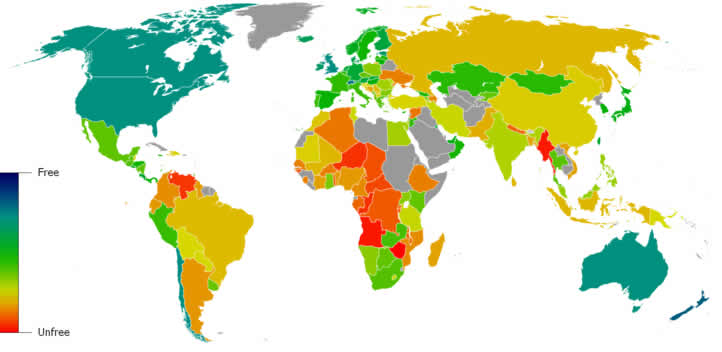UNIT 7: INDIVIDUAL AND COLLECTIVE RIGHTS
Completion requirements
14. Poverty and Equality

India Courtesy K R Ranjith
One of the great promises of economic freedom experienced under a liberal ideology was the promise of prosperity for everyone. However, today that promise is unfulfilled for millions of people.
The photo shows a shantytown in front of an office tower in Mumbai, India, graphically illustrating how rich and poor co-exist in society.
Poverty means being unable to afford your own basic human needs. It means going without clean water, food, shelter, clothing, health care, and education.
The photo shows a shantytown in front of an office tower in Mumbai, India, graphically illustrating how rich and poor co-exist in society.
Poverty means being unable to afford your own basic human needs. It means going without clean water, food, shelter, clothing, health care, and education.
Disparity Worldwide
More than 1.5 billion people in the world live in absolute poverty. That is about one quarter of the world's population. Before the Industrial Revolution, more than half of the world's people were extremely poor.There are many reasons poverty persists. Some claim a lack of economic freedom; others blame capitalism for providing greater opportunities for the rich to get richer while keeping the poor where they are. Corruption, lack of industrialization, political instability, few political institutions, and limited resources may also have roles in the continuation and/or expansion of poverty.
|
|
Look at the two maps below.
The one the right shows world poverty, and the one on the left shows economic freedom.Do you see any relationship between the two?

Produced with information from the Fraser Institute
Nations represented by the dark blue or green colour are free, while those shown in red are not free. Nations in grey do not have enough data to determine their degree of freedom.

Produced with information from the United Nations Human Development Index
In nations that are dark blue, less than 2% of the population lives in poverty as compared with nations that are dark red where over 60% of the people live in poverty.
Disparity in Liberal Democracies
Not only is there great disparity between nations, there is great inequality within nations. Even in a nation such as Canada, one child in nine lives below the poverty line. Homelessness continues to be a concern in many communities.Some people believe that with all the economic freedoms provided by a liberal democracy, there is no excuse for a person to be poor except his or her own poor choices. Others feel that, because people are born with various abilities and family circumstances and because not every individual has access to the same resources (financial, emotional, or educational), in no way can everyone advance at the same rate.
|
|
Consider the following questions:
- Why are people poor? Can liberalism do anything to help them?
- Does liberalism contribute to economic prosperity for all, or to a growing gap between rich and poor?
- Should governments in liberal democracies protect people from extreme poverty?